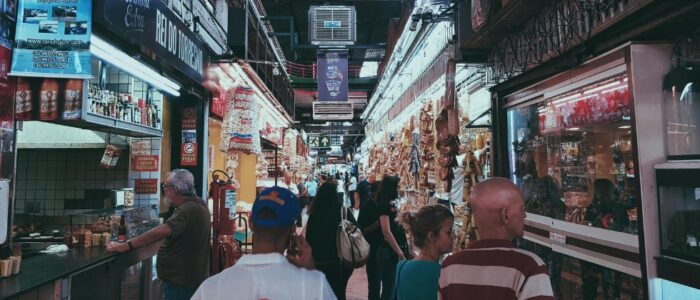In an era where digital convenience dominates, the resurgence of physical retail experiences might seem surprising. Yet pop-up stores—temporary, experiential retail spaces—are rewriting the rules of customer engagement and brand storytelling. These short-term stores pack a punch far beyond their limited shelf life, offering businesses a unique avenue to connect with customers, test ideas, and leave lasting impressions.
Also Read: The Importance of Store Layout and Visual Merchandising
What Are Pop-Up Stores?
Pop-up stores are temporary retail spaces designed to last from a few days to several months. Unlike traditional brick-and-mortar shops, they thrive on immediacy and exclusivity. Whether nestled in high-traffic urban areas, set up inside malls, or integrated into events and festivals, pop-ups are purpose-built to draw attention and create buzz.
What makes them so powerful? It’s their ability to create urgency, intimacy, and immersion all at once.
A Platform for Experimentation
For emerging and established brands alike, pop-ups offer a low-risk, high-reward opportunity to test new products, markets, or concepts without the long-term overhead of a permanent location. Want to see if your brand resonates in a new city? Launch a pop-up. Curious how customers react to a new line? Run a weekend trial.
This hands-on testing ground allows businesses to collect real-time data, get direct customer feedback, and iterate rapidly—an advantage even eCommerce can’t always match.
Building Brand Awareness and Loyalty
Pop-ups are not just about selling products; they’re about selling an experience. Through thoughtful design, interactive displays, and sensory engagement, brands can build deep emotional connections with visitors. From Instagram-worthy installations to live demos and influencer events, pop-ups generate memorable encounters that stick with consumers long after the doors close.
For many customers, the tactile experience of engaging with a brand in person—smelling a candle, trying on a jacket, or speaking with a founder—deepens trust and loyalty in ways that digital ads or online reviews often cannot.
Driving Scarcity and Demand
Limited-time availability creates a scarcity mindset that fuels FOMO (fear of missing out). Customers are more likely to act quickly, share the experience on social media, and spread the word organically. This viral element is particularly valuable for new brands seeking traction or established ones launching exclusive lines.
Additionally, pop-ups often become destinations. People go out of their way to visit a pop-up because they know it won’t be around forever. This makes every visit more intentional and every purchase more meaningful.
A Strategic Complement to eCommerce
Pop-ups and digital retail don’t compete—they complement each other. For online-first brands, pop-ups offer a way to bring digital experiences to life. Customers can see, touch, and try products before completing their purchases online, reducing returns and increasing satisfaction.
Moreover, pop-ups can act as data-collection hubs, integrating QR codes, NFC tags, and app-based experiences to guide shoppers from physical to digital seamlessly. This omni-channel integration enhances the overall customer journey and builds a unified brand presence.
Future-Forward Retail
In a post-pandemic world where flexibility and agility are prized, pop-ups are uniquely positioned to thrive. Retailers now see them as more than marketing stunts—they’re strategic tools for launching products, exploring locations, and engaging communities.
Major brands like Nike, Glossier, and Amazon have all embraced pop-ups to connect with niche audiences and build brand affinity. But even small businesses and local artisans can leverage pop-up formats to gain visibility and test ideas without major investment.
Also Read: Retail’s Next Frontier: Experiential Selling Brings Footfall
Final Thoughts
Pop-up stores may be temporary in nature, but their impact is anything but. By blending experience, urgency, and experimentation, they offer businesses a compelling way to connect with modern consumers. In a marketplace defined by constant change, the power of pop-ups lies in their ability to turn a fleeting moment into a lasting memory—and a loyal customer.
Tags:
Consumer BehaviorCustomer ExperienceCustomer RetentionRetail InnovationRetail TrendsAuthor - Imran Khan
Imran Khan is a seasoned writer with a wealth of experience spanning over six years. His professional journey has taken him across diverse industries, allowing him to craft content for a wide array of businesses. Imran's writing is deeply rooted in a profound desire to assist individuals in attaining their aspirations. Whether it's through dispensing actionable insights or weaving inspirational narratives, he is dedicated to empowering his readers on their journey toward self-improvement and personal growth.
